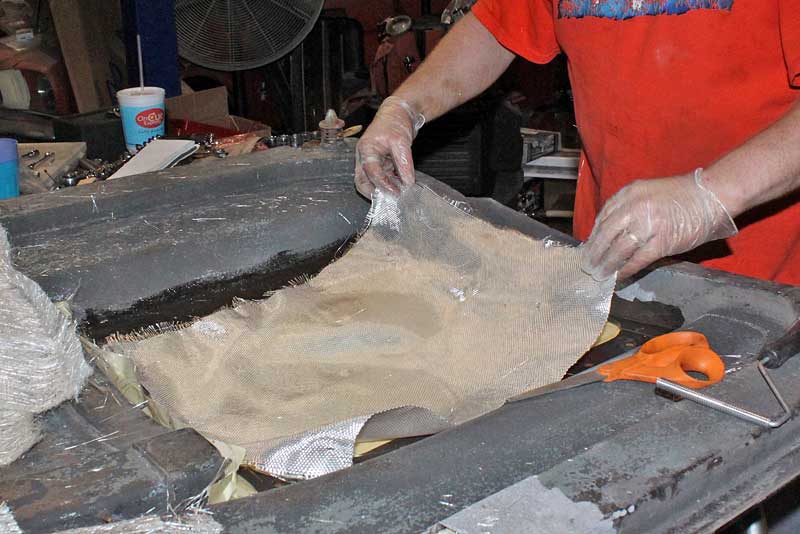Whether you’re a seasoned DIY enthusiast or a novice homeowner, home improvement projects often involve hanging shelves, cabinets, or other heavy objects on walls. But before you start drilling, you need to locate the wall studs – the vertical or horizontal wooden supports that provide structural integrity to your walls.
You will enter the stud finder, a handy tool that helps you pinpoint these hidden studs with precision.
However, you need to know how to use the stud finder. Read this article to learn all you need to know.
Table of contents
- What is a Stud Finder?
- Types of Stud Finders
- How to Use a Stud Finder
- Using a Magnetic Stud Finder
- Using an Electronic Stud Finder
- How to use a Stud Finder for Wires
- How to use a StudFinder on Dry Wall
- Can I Use My Phone as a Stud Finder?
- How to Guess Where a Stud Is
- How to Make Your Stud Finder Last
- Conclusion
- References
- Recommendation
What is a Stud Finder?
A stud finder is a handy tool that helps locate wooden studs within walls. Studs are vertical or horizontal pieces of wood that form the structural framework of walls.
They provide support for hanging objects like shelves, cabinets, or TVs. Using a stud finder ensures that you drill screws or nails into the studs, providing a secure anchor for your hanging objects.
A stud finder is a handheld device used to locate the wooden studs that form the framework of walls. Studs are typically made of 2×4 lumber, and they provide structural support for drywall, paneling, and other wall coverings.
Stud finders are essential tools for DIYers and homeowners who need to hang shelves, cabinets, TVs, or other heavy objects on walls.
Types of Stud Finders
There are two main types of stud finders:
Magnetic Stud Finders: These stud finders detect the ferrous metal nails or screws used to attach the drywall to the studs. They are simple to use and relatively inexpensive.
They operate by detecting the ferrous metal nails or screws used to attach the drywall to the studs. These stud finders are easy to use and suitable for locating studs that are relatively close to the surface of the wall.
Electronic Stud Finders: These stud finders use electromagnetic sensors to detect differences in density between the hollow spaces within the walls (where no studs are present) and the solid mass of the studs. They are more versatile and can detect studs deeper within walls.
Electronic stud finders are more expensive than magnetic stud finders but are worthwhile if you frequently work with walls.
How to Use a Stud Finder
To use a stud finder, simply turn it on and hold it against the wall. The stud finder will emit a beep or light up an indicator light when it detects a stud.
Mark the location of the stud with a pencil, and then move the studfinder to find the other edge of the stud.
Once you have found the edges of the stud, you can safely drill nails or screws into it to hang your object.
Using a Magnetic Stud Finder
- Turn on the stud finder: Most magnetic stud finders have a power button or switch. Turn it on to activate the magnetic sensor.
- Hold the stud finder against the wall: Place the stud finder against the wall, ensuring it’s level and making firm contact with the surface.
- Move the stud finder slowly: Slowly move the stud finder horizontally along the wall, keeping it flat against the surface.
- Detect the stud: As you move the stud finder, the magnetic sensor will detect the metal nails or screws in the stud. The studfinder will either emit a beep, light up an indicator light, or both to indicate the presence of a stud.
- Mark the stud’s edges: Once you detect the stud, mark the edge of the stud with a pencil or light marking tool. Continue moving the studfinder to locate the other edge of the stud and mark it as well.
Using an Electronic Stud Finder
- Turn on the stud finder: Consult the manual for your specific electronic stud finder model to locate the power button or switch. Turn it on to activate the sensor.
- Choose the appropriate mode: Some electronic stud finders have different modes for detecting studs at different depths within the wall. Select the appropriate mode for your wall thickness.
- Calibrate the stud finder: Hold the stud finder in the air and press the calibration button or follow the calibration instructions in the manual. This ensures accurate reading.
- Place the stud finder against the wall: Press the stud finder firmly against the wall, ensuring it’s level.
- Move the stud finder slowly: Slowly move the stud finder horizontally along the wall, keeping it flat against the surface.
- Detect the stud: As you move the stud finder, the sensor will detect the density difference between the hollow space and the stud. It will either emit a beep, light up indicator lights, or both to indicate the presence of a stud.
- Mark the stud’s edges: Once you detect the stud, mark the edge of the stud with a pencil or light marking tool. Continue moving the studfinder to locate the other edge of the stud and mark it as well.
How to use a Stud Finder for Wires
Stud finders are primarily designed to locate wooden studs within walls, but some models also have a wire detection feature. This feature is useful for identifying the presence of live electrical wires before drilling or hammering into a wall. Here is the step:
- Turn on the studfinder and select the wire detection mode. Consult your manual for specific instructions on how to activate wire detection mode.
- Hold the studfinder flat against the wall and slowly move it horizontally. It will emit a beep or light up an indicator light if it detects a live wire.
- Mark the location of the wire with a pencil or light marking tool. Avoid drilling or hammering near the marked location.
How to use a StudFinder on Dry Wall
Stud finders can be used effectively on drywall, the most common type of wall covering in homes. The specific steps may vary depending on the type of stud finder you are using, but the general principles remain the same.
Here is the steps:
- Turn on the stud finder and choose the appropriate mode. Some stud finders have different modes for detecting studs at different depths within the wall. Select the mode that corresponds to the thickness of your drywall.
- Hold the stud finder flat against the wall and slowly move it horizontally. The stud finder will emit a beep or light up an indicator light when it detects a stud.
- Mark the location of the stud with a pencil or light marking tool. This will help you identify the stud’s location when drilling or hammering into the wall.
- Start near electrical outlets, as they are typically mounted on studs.
- Check for wall seams, as studs are often placed near wall seams for added support.
- Tap on the wall with your knuckles. A solid knock indicates a stud, while a hollow sound suggests a space.
If you are unsure about the location of a stud, consider using multiple stud finders from different manufacturers to cross-check results.
Can I Use My Phone as a Stud Finder?
There are smartphone apps that claim to function as stud finders. However, their accuracy and reliability are often questionable.
These apps typically use the phone’s magnetometer to detect magnetic fields, which may not always be accurate for locating studs.
Moreover, the magnetometer’s sensitivity can be affected by other nearby metal objects.
How to Guess Where a Stud Is
If you don’t have a stud finder available, there are a few methods you can use to make an educated guess about where a stud might be:
- Check for electrical outlets: Electrical outlets are typically mounted on studs, so you can assume that there is a stud directly behind the outlet box.
- Look for wall seams: Studs are often placed near wall seams, as they provide additional support for the joint.
- Tap on the wall: Gently tap on the wall with your knuckles. Studs will sound solid, while hollow spaces will produce a more echoing sound.
- Use a stud finder rental: If you only need a stud finder occasionally, you can consider renting one from a hardware store.
Remember, these methods are not foolproof and may not always provide accurate results. It’s always best to use a dedicated stud finder for precise stud location.
How to Make Your Stud Finder Last
Investing in a quality studfinder is essential for any DIY enthusiast or homeowner who frequently tackles projects involving wall hanging. To ensure your studfinder continues to provide accurate and reliable service for years to come, consider these practical tips:
1. Protect from Physical Damage
Treat your studfinder with care to prevent bumps, drops, or excessive force. Avoid storing it in loose toolboxes or drawers where it can jostle against other tools. Instead, opt for a cushioned carrying case or dedicate a specific spot in your toolbox where it can rest securely.
2. Mind the Battery Life
When not in use, remove the batteries from your studfinder to conserve battery life and prevent potential corrosion from leaking batteries. If you use your studfinder regularly, consider investing in rechargeable batteries to reduce battery waste and save money in the long run.
3. Keep it Clean
Dirt and debris can accumulate over time, potentially affecting the sensor accuracy of your stud finder. Use a soft, damp cloth to wipe down the exterior of your studfinder periodically, ensuring the sensors remain clean and unobstructed.
4. Store in a Dry Environment
Moisture can damage electronic components, so store in a dry environment, away from direct sunlight, extreme temperatures, and humid conditions. A dedicated toolbox or a dry storage cabinet is ideal for protecting your studfinder from moisture.
5. Consult the User Manual
Your user manual provides valuable information on specific care and maintenance instructions. Refer to the manual for any manufacturer-recommended practices or troubleshooting tips to keep your stud finder in top condition.
By following these simple yet effective tips, you can extend the lifespan of your stud finder and ensure it continues to be a reliable tool for your DIY projects. Remember, proper care and maintenance will save you money on replacements and ensure you have the tools you need to tackle any wall-hanging task with confidence.
Conclusion
Stud finders are invaluable tools for DIY projects that involve hanging objects on walls.
By understanding the different types of stud finders and following the step-by-step guide, you can confidently locate wall studs and securely anchor your objects, ensuring a safe and aesthetically pleasing outcome for your home improvement endeavors.




